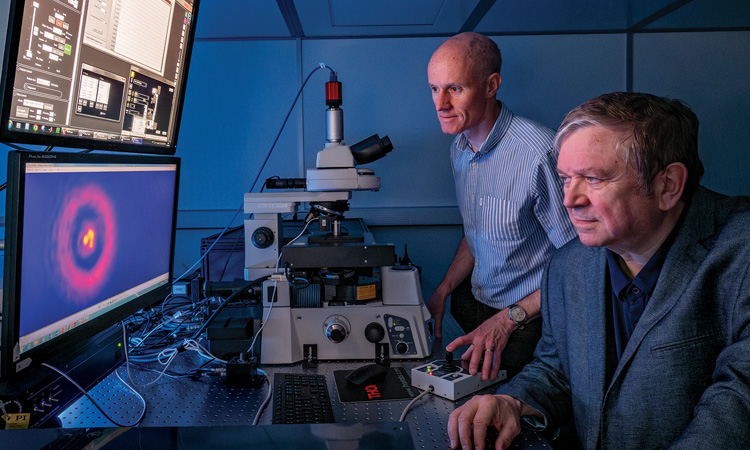Feature
The Birth of Picophotonics
Picometer-scale events in the nanoworld can be monitored with topologically structured light, while light-induced interactions and picometric movements can underpin time crystals—a new form of functional photonic material.
 Authors MacDonald (left) and Zheludev (right) in the lab at the Optoelectronic Research Centre, University of Southampton, UK. [University of Southampton]
Authors MacDonald (left) and Zheludev (right) in the lab at the Optoelectronic Research Centre, University of Southampton, UK. [University of Southampton]
The Van der Waals diameter of a silicon atom is 220 picometers, more than three orders of magnitude smaller than the wavelength of visible light. That being the case, could picometer-scale phenomena possibly be important to light–matter interactions and photonic applications—let alone to the extent that we can talk about a new field of “picophotonics”?
…Log in or become a member to view the full text of this article.
This article may be available for purchase via the search at Optica Publishing Group.
Optica Members get the full text of Optics & Photonics News, plus a variety of other member benefits.
